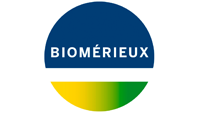bioMérieux, a world leader in the field of in vitro diagnostics, today launched VIDAS® EBV for the detection of the Epstein-Barr virus (EBV). This virus causes 80% of cases of infectious mononucleosis, which is often known as “the kissing disease” because it is transmitted through saliva.
bioMérieux Launches Molecular Biology Test, NucliSENS EasyQ® HIV-1 v2.0, for Improved Care of Patients with HIV
New test can be used with the first CE marked Dry Blood Spot sample collection technique for viral load monitoring, bringing testing to patients in remote locationsbioMérieux, a world leader in the field of in vitro diagnostics, presented the latest addition to its HIV testing offer at the European Congress of Clinical Microbiology and Infectious Diseases (ECCMID). NucliSENS EasyQ® HIV-1 v2.0 is a test able to detect even very low viral load levels in AIDS patients, offering one of the highest degrees of sensitivity available today.
2009 ESCMID/bioMérieux Research Grant in Clinical Microbiology Winner Conducting Research on Major Cause of Healthcare-Associated Infections
bioMérieux, a world leader in in vitro diagnostics, and the European Society of Clinical Microbiology and Infectious Diseases (ESCMID) announce the recipient of their 2009 Research Grant, which recognizes excellence and major contributions to progress in the field of clinical microbiology by a young scientist from Eastern Europe.
Three Clinical Studies of bioTheranostics Molecular Breast Cancer Diagnostics Presented at San Antonio Breast Cancer Symposium
Independent studies validate the utility of Theros BCISM for improving risk stratification of early stage breast cancer patients.
bioMérieux to Develop New Highly-Specific, Non-invasive Test for Prostate Cancer, Reducing Unnecessary Biopsies
Prostate cancer is the most prevalent cancer in the United States and the 4th most common worldwide. The combination of a test for a new prostate cancer biomarker, Annexin 3, with the standard screening methods could potentially reduce the number of biopsies conducted by up to 75%, when compared with current screening methods alone.




